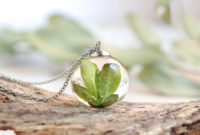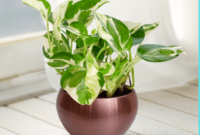Growing and Caring for Money Plant – A Guide
Learn how to grow and care for money plant, a popular indoor plant known for its unique foliage and supposed ability to bring wealth and prosperity. Our guide covers everything you need to know! Money plant, also known as Pachira aquatica or the “Feng Shui” plant, is a popular indoor plant that is believed to bring wealth and prosperity to its owner. With its lush green foliage and easy-to-care-for nature, it’s no wonder that many plant enthusiasts consider it as a must-have in their collection, Money Plant Care, Money Plant Benefits, Money Plant Propagation, Money Plant Varieties, Money Plant for Sale.

In this guide, we will provide you with all the information you need to successfully grow and care for your money plant. From its benefits to its various varieties, propagation methods, watering and fertilizing, pests and diseases, pruning and maintenance, and even decorating tips, we’ve got you covered.
What is Money Plant?
Money plant, or scientifically known as Epipremnum aureum, is a popular indoor plant native to Southeast Asia. It is called by several names including devil’s ivy, golden pothos, and Ceylon creeper. Money plant is known for its cascading green leaves and easy care.
There are several varieties of money plant, each with unique leaf types and patterns. The most common varieties of money plant include:
| Variety | Description |
|---|---|
| Marble Queen | Has green leaves marbled with white |
| Golden | Has solid green leaves |
| Jade | Has dark green leaves with golden-yellow spots |
Money plant is a versatile plant that can be grown in soil or water, making it a popular choice for those who want to add greenery to their home or office.
Benefits of Growing Money Plant
Aside from being aesthetically pleasing, growing money plant also offers numerous benefits. Here are some of the most commonly known advantages of having this beautiful plant in your home:
- Good Luck Charms: According to Feng Shui, money plants are believed to bring good luck, prosperity, and wealth. Some people even associate the number of leaves on the plant with specific benefits, such as seven leaves for good health and 21 leaves for abundant wealth.
- Natural Air Purifier: Money plant is known to purify the air by removing harmful toxins such as formaldehyde, xylene, and benzene. It’s an excellent choice for anyone who wants to enhance air quality in their home.
- Easy to Grow: Money plant is relatively easy to grow and maintain, making it a popular choice for novice gardeners. It can thrive in moderate to low light conditions, and it grows quickly with minimal care.
- Positive Energy: Money plant is also believed to emit positive energy and reduce stress levels. Its vibrant green color and lush foliage can create a calming effect, making it an excellent addition to any living space.
With all of these benefits, it’s no wonder that money plant is so popular among both amateur and experienced gardeners alike. Now that you know a little bit about what makes this plant so special, you’ll be better equipped to care for it and enjoy all of its wonderful qualities.
How to Grow Money Plant
The money plant is a popular indoor plant that is easy to grow and maintain. Here is a step-by-step guide on how to grow money plant:
Propagation
Money plant can be propagated in two ways: through stem cuttings or through seeds. Stem cuttings are the quickest and easiest method, as seeds can take months to germinate.
To propagate money plant through stem cuttings:
- Take a healthy stem cutting from an existing money plant. The cutting should be at least 6 inches long with a few leaves attached.
- Remove the leaves from the bottom 2 inches of the stem.
- Plant the cutting in a pot filled with well-draining soil.
- Water the cutting thoroughly and keep the soil moist.
- Place the pot in a warm and bright location, but away from direct sunlight.
- After a few weeks, roots will begin to develop and new growth will appear.
Soil
Money plant requires well-draining soil that is rich in nutrients. A mixture of equal parts potting soil and sand or perlite works well.
Lighting
Money plant thrives in bright, indirect light. Direct sunlight can scorch the leaves, so it is best to place the plant in a location that receives filtered or indirect sunlight.
Watering
Money plant prefers soil that is consistently moist but not waterlogged. Water the plant when the top inch of soil feels dry to the touch. Overwatering can lead to root rot, so be sure to allow the soil to drain completely after watering.
In general, money plant is a low-maintenance plant that is perfect for beginners. With the right care and attention, your money plant will flourish and add a touch of green to your home or office.

Watering and Fertilizing Money Plant
Proper watering and fertilizing are essential for the healthy growth of your money plant. Here are some tips to help you keep your plant thriving:
Watering
Money plant is sensitive to over-watering, so it’s important not to let the soil get too soggy. Water your plant when the soil feels dry to the touch, but avoid letting it sit in standing water.
One way to ensure proper drainage is to use a pot with a drainage hole. If your pot doesn’t have a drainage hole, place a layer of gravel or pebbles at the bottom to help with drainage.
During hot and dry weather, you may need to water your plant more frequently. Alternatively, during the winter months, when the plant is in a dormant phase, it will require less water.
Fertilizing
Money plant doesn’t require heavy fertilization, but it does benefit from occasional feedings to promote healthy growth.
Use a balanced fertilizer once every two weeks during the growing season (spring and summer), and once a month during the dormant season (fall and winter). Dilute the fertilizer to half strength to avoid over-fertilization, which can damage the plant.
Alternatively, you can use an organic fertilizer, such as compost or fish emulsion, to provide nutrients to the soil.
Following these watering and fertilizing tips will help keep your money plant healthy and thriving for years to come.
Pests and Diseases that Affect Money Plant
Despite being relatively easy to care for, money plants are not immune to pests and diseases. The following are some of the most common ones to watch out for:
| Pests | Description | Treatment |
|---|---|---|
| Spider mites | Small, reddish-brown bugs that suck sap from leaves, causing them to yellow and fall off. | Wipe leaves with soapy water, spray with neem oil solution. |
| Mealybugs | White, cotton-like bugs that cluster on leaves and stems, causing stunted growth and leaf drop. | Remove with a cotton swab dipped in alcohol, spray with insecticidal soap. |
| Scale insects | Tiny, round bugs that attach to stems and leaves and excrete a sticky, sugary substance, causing sooty mold to grow. | Scrape off with a toothbrush, spray with horticultural oil. |
Diseases like root rot and leaf spot can also affect money plants. Root rot is caused by overwatering or poor drainage and can lead to wilting, yellowing, and eventual death of the plant. To prevent root rot, make sure to use a well-draining soil mix and avoid watering too frequently. Leaf spot is a fungal disease that causes brown or black spots on leaves and can be treated with fungicide.
Regularly inspecting your money plant for signs of pests or diseases and taking appropriate action can help keep it healthy and looking its best.
Pruning and Maintenance of Money Plant
Money plants are relatively easy to maintain, and pruning is an essential aspect of their care. Pruning keeps them healthy and encourages new growth. Money plants can be pruned at any time of the year. However, wait until they have matured before pruning them for the first time.
How to Prune Money Plant
Money plants can be pruned in various ways, depending on the desired aesthetic. If you have a specific shape in mind, prune it to achieve that shape. However, do not prune more than 30% of the foliage at any one time. Too much pruning may shock the plant and cause it to die.
Use sharp, sterilized pruning shears to prune your money plant. This reduces the risk of transmitting diseases from one plant to another. When pruning, cut just above a node or leaf so that the plant can grow new shoots from that point.
How to Maintain Money Plant
Maintaining money plants is essential for their longevity. Water them regularly, but do not overwater them, as this may cause root rot. Allow the soil to dry out between waterings. Money plants grow best in well-draining soil, so be sure to use a pot with drainage holes.
If you notice any yellowing or wilting leaves, remove them immediately as they can attract pests and diseases. Additionally, repot your money plant every two years or when it outgrows its current pot.
Decorative Uses of Money Plant
Money plants are versatile and can be used for decorative purposes. You can wrap them around poles, trellises, or stakes to create a natural climb. Alternatively, you can hang them in a basket for a more dramatic effect.
You can also grow money plants in water. This method is called hydroponics and is gaining popularity among indoor gardeners. Hydroponic money plants can be grown in decorative glass jars or vases, adding a touch of greenery to any space.

Decorating with Money Plant
Money plant is not only popular for its supposed ability to bring wealth and prosperity, but also for its decorative appeal. Here are some creative ways to incorporate money plant into your home decor:
- Hang it: Money plant looks great in hanging baskets, especially when positioned near a window to catch the sunlight.
- Train it: You can train money plant to climb a trellis or grow along a wall for a unique, eye-catching display.
- Display it: Money plant can be placed on a shelf or table in a decorative pot, adding a touch of green to any room.
If you’re looking to purchase money plant, there are several options available. Many nurseries and plant shops carry money plant for sale. You can also find money plant online or through various plant subscription services.
FAQ about Money Plant
Here are some frequently asked questions about money plant:
Is money plant toxic to pets?
Yes, money plant is toxic to both dogs and cats. The plant contains insoluble calcium oxalates that can cause irritation and swelling of the mouth and throat if ingested.
How fast does money plant grow?
Money plant is known for its fast growth and can grow up to 10 feet in a single year under optimal conditions.
How often should I water my money plant?
Money plant prefers soil that is moist but not waterlogged. Water your plant once a week and adjust the frequency based on the soil moisture level. Make sure to let the soil dry out slightly between watering sessions.
Can money plant be grown in water?
Yes, money plant can be grown in water. Simply place the cutting in a vase filled with clean water and change the water every few days to prevent bacterial growth.
How often should I fertilize my money plant?
Money plant should be fertilized once a month during the growing season, which is typically from spring to summer. Use a balanced liquid fertilizer and dilute it to half strength before applying.
How do I propagate money plant?
Money plant can be propagated through stem cuttings or by dividing the root ball. Stem cuttings should be taken from the plant’s new growth and placed in moist soil until they root.



